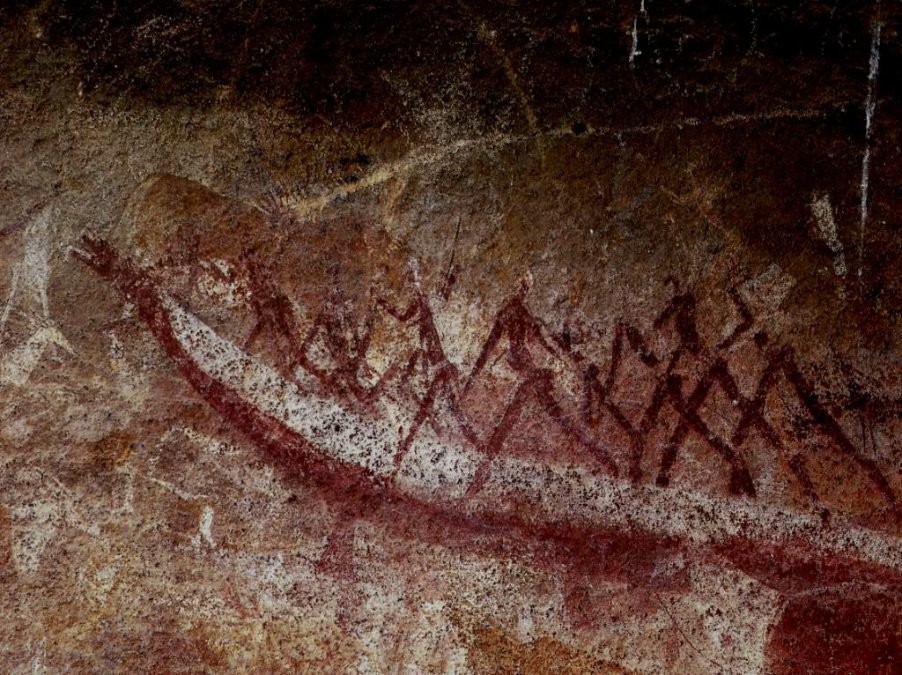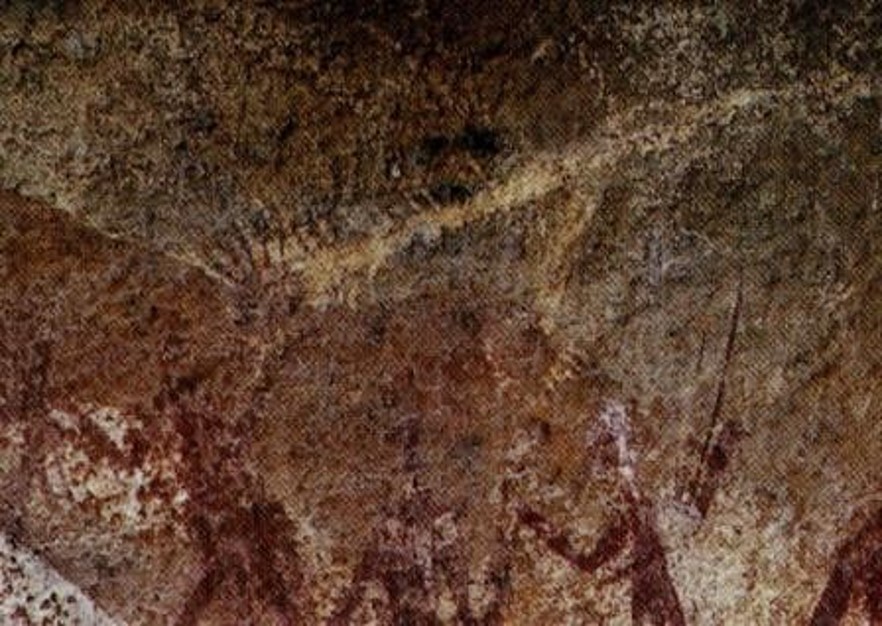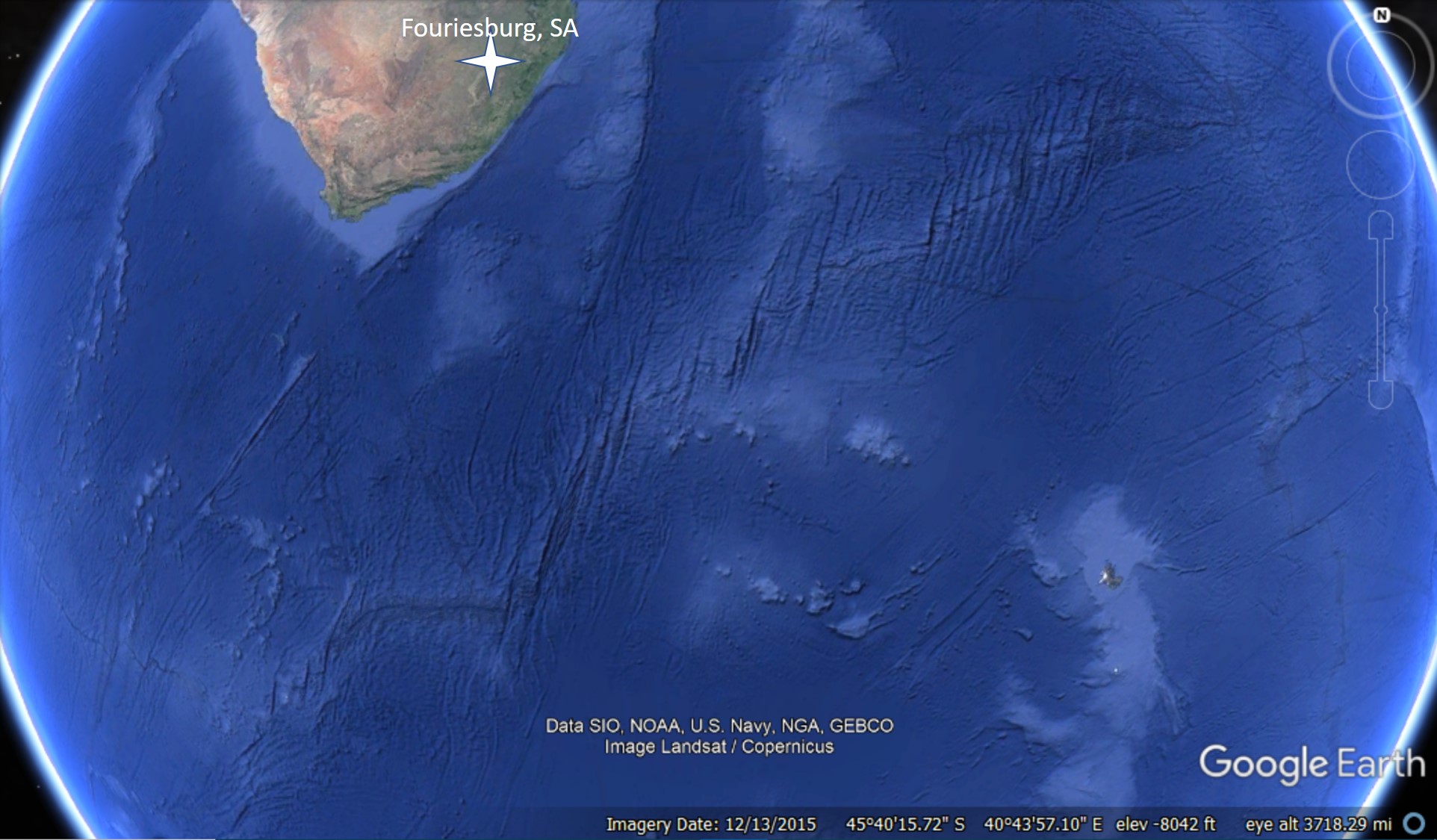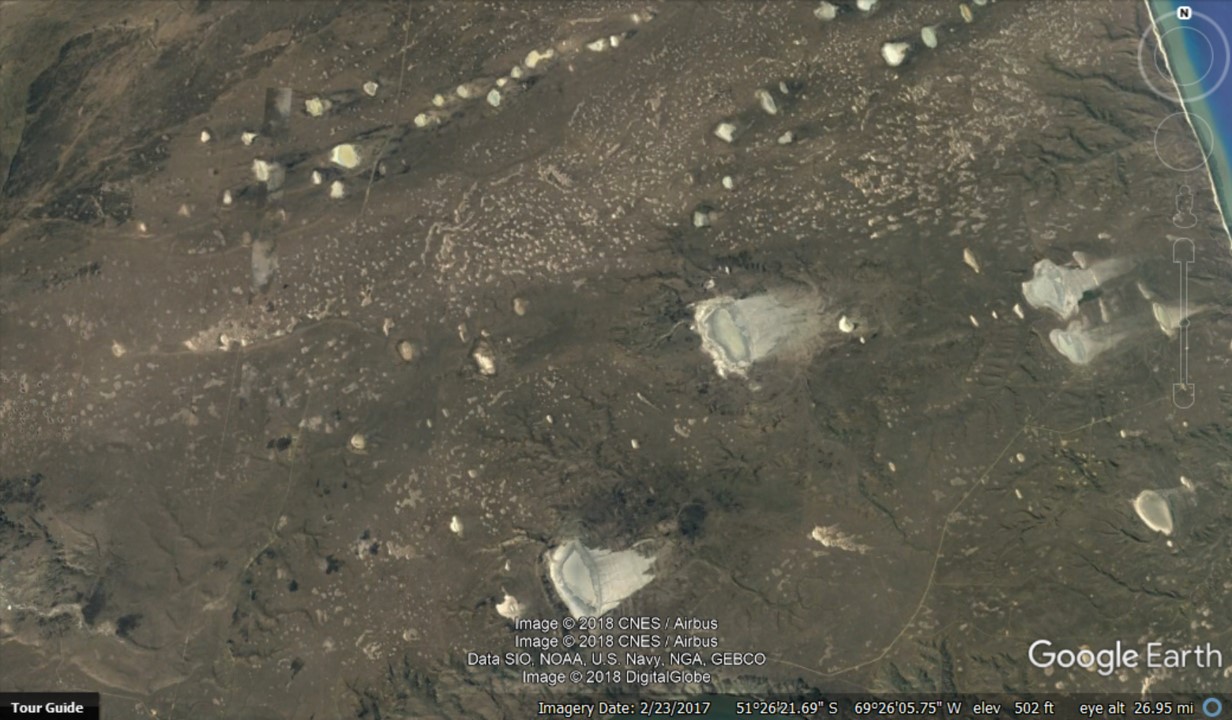Recently, I came across a Linkedin post by Jim Davidson titled, “10,000 BC – A Cosmic Event” (available here). In the post he shows photos of cave paintings taken near Fouriesburg, South Africa. One of the paintings depicts what he calls a “two-headed comet” as it enters Earth’s atmosphere, just prior to impact. The image, below, is taken from his post, and it shows a very long comet tail (light horizontal line near top third of image), as well as the two-headed comet. Note that the painting depicts the object moving from right to left – an important observation!
 Here is a closer look at the bifurcated comet – it is somewhat difficult to discern the second head, but it is moving downward from the more easily identifiable upper head.
Here is a closer look at the bifurcated comet – it is somewhat difficult to discern the second head, but it is moving downward from the more easily identifiable upper head. On the close-up image, I overlay yellow circles on the bifurcated heads, as well as lines over the comet’s lengthy tail.
On the close-up image, I overlay yellow circles on the bifurcated heads, as well as lines over the comet’s lengthy tail.

Next is a Google Earth map depicting the impact site, as well as the location of Fouriesburg, South Africa (white cross). Note the gap in the impact crescent.

In my recently published paper, I ascribe the impact crescent gap to the loosely packed nature of the IO (impacting object). It is loosely packed due to relatively small gravitational accelerations induced by its solid, dense central core in the Oort Cloud where the IO formed. (The IO’s solid core carved the trough in the central part of the impact crescent.) The loosely packed IO’s interaction with Earth’s atmosphere, compounded by its acceleration caused by Earth’s gravity, are the primary causes for the IO’s breakup into two major parts as it approached impact. Thus, the crescent gap and its disjoint arcs.
By the way, this impact delivered the worldwide flood, and caused the many (documented) environmental changes to presently exposed landscapes that geologists ascribed to a Younger-Dryas impact. They will eventually realize that the worldwide flood induced the YD ecosystem changes.
On the previous image, I’ve overlain the impact crescents (white arcs) and the IO’s central core’s path (red arrow).

To an observer in Fouriesburg, South Africa, the IO would have approached Earth from the observer’s right to left, as in the cave painting – it is an eye witness account of the IO impact!
Its very long tail was caused by the IO’s break-up as it approached impact, its many fragments illuminated by the sun (the IO was tens of thousands of times larger than a typical comet, so imagine how its tail appeared on final approach). A corroborating recollection in the human tradition is the Chinese New Year dragon, an illuminated serpent above the clouds with water emanating from its mouth. Like the cave painting, the dragon also commemorates the worldwide flood that the IO delivered.
 As mentioned in earlier posts, IO ice fragment impact craters can be found along the impact path, which we can identify by back-propagating the impact trough. Thus, we find the craters not only in North America (that geologists wrongly ascribe to some phantom ice sheet impact) but in South America, too, particularly in southern Argentina, as shown on the next map.
As mentioned in earlier posts, IO ice fragment impact craters can be found along the impact path, which we can identify by back-propagating the impact trough. Thus, we find the craters not only in North America (that geologists wrongly ascribe to some phantom ice sheet impact) but in South America, too, particularly in southern Argentina, as shown on the next map.

In closing, there was a worldwide flood, and it was delivered by a cosmic impact roughly 12,800 years before present. Its waters, more than two miles worth, flooded the planet from the former abyss upward, which completely changed the ecosystems on presently exposed landscapes (Younger-Dryas effects). And it nearly killed our species.
Yet we recognize none of this because of geology’s erroneous yet pervasive “no flood, ever” paradigm.
PS (27Jan2021) – whoever is spamming this post, please stop.